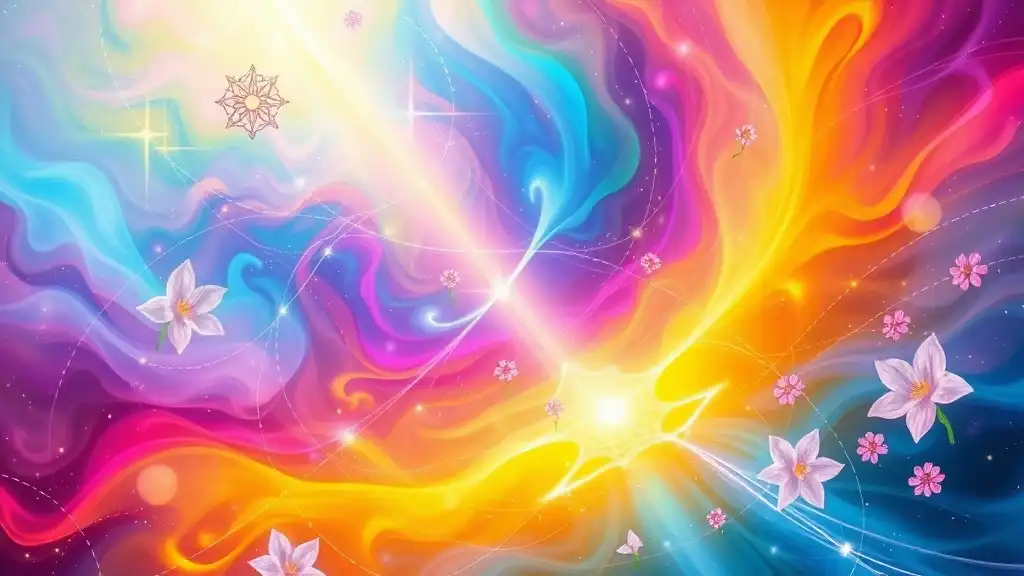The significance of colors in spirituality transcends cultural boundaries and permeates various aspects of our lives. Among these colors, the color red stands out with its vibrant and powerful essence. Red is not just a color; it embodies a wide spectrum of meanings and associations that reflect human emotions, nature, and spiritual energies. Its prevalence across cultures and spiritual practices highlights the pivotal role that red plays in our understanding of the world around us.
The Symbolism of the Color Red
Historical Significance
Red has played a crucial role in shaping the beliefs and practices of ancient civilizations. In Egypt, red was often associated with life and fertility. It adorned tombs and artifacts, symbolizing the life force that continues beyond death. The Greeks and Romans utilized red in their art and literature, representing valor and strength in battle. Throughout history, red has been more than just a pigment; it has been imbued with profound meaning, particularly in religious texts and artifacts. Many sacred documents use red ink to denote vitality, divinity, and importance, signifying that this color demands attention.
Psychological Impacts
Emotionally, red invokes a deep array of feelings. It is often tied to passion, anger, and courage. Psychological studies suggest that red can stimulate energy and increase heart rates, making it an influential color in human interactions. It has the ability to evoke not just passion and love but also aggression and urgency. This duality reveals the complexity of human emotions and the necessity of recognizing these facets in our spiritual journeys.

The Spiritual Meaning of Red
Vitality and Life Force
In spiritual contexts, red represents vitality and the life force that flows within us. This connection is primarily linked to the root chakra, located at the base of the spine. The root chakra is the foundation of our energetic system, emphasizing grounding and stability. When our root chakra is balanced, we experience a sense of security and life force that empowers us to engage with the world. The color red, therefore, serves as a reminder of our inherent strength and the energy that fuels our existence.
Love and Passion
The dual nature of red as a color of love and passion comes with complexity. On one hand, it symbolizes deep romantic love and intimacy; on the other, it can evoke feelings of aggression or anger when emotions run high. This intricate balance makes red a motivator in spiritual relationships, promoting passionate connections while reminding us to channel this energy positively. In many spiritual practices, embracing the power of red can enhance attraction and desire, reinforcing personal and romantic relationships.
Courage and Strength
Among the myriad meanings attached to red, courage and strength stand out prominently. Throughout various spiritual traditions, red has been associated with bravery and determination. In the face of adversity, red serves as a beacon of empowerment, inspiring individuals to rise to challenges and stand up for their beliefs. Many rituals incorporate red elements to summon strength and protection, reminding practitioners that they possess the inner power to confront life's battles.

Red in Different Cultures and Spiritual Practices
Eastern Interpretations
In Eastern cultures, red holds rich and varied meanings. In Chinese culture, red is synonymous with good fortune and happiness; it is often worn during celebrations, especially during the Lunar New Year, to attract positive energy. Statues and symbols colored red are believed to ward off negative spirits, providing a sense of security and protection. Meanwhile, in Hinduism, red is pivotal in festivals and rituals, representing both purity and sensuality. The goddess Durga, frequently depicted adorned in red, emphasizes the strength and ferocity of the divine feminine.
Western Interpretations
In contrast, Western interpretations of red gravitate toward concepts of passion and action. In Christianity, red signifies love, sacrifice, and salvation, particularly in the context of Jesus Christ's Passion. This association with blood and sacrifice highlights the role of red as a color of deep emotional resonance tied to faith and devotion. From adornments to rituals, red serves as a powerful expression of commitment and spiritual fervor.

Incorporating Red into Spiritual Practices
Meditation and Visualization Techniques
Integrating the color red into meditation can bring about profound transformation. Practicing visualization with red can help ignite energy and empowerment. For example, visualizing a vibrant red light at the base of the spine during meditation can balance the root chakra, fostering feelings of stability and vitality. This practice encourages a sense of grounding, allowing one to navigate through life with confidence and inner strength.
Use of Red in Rituals and Ceremonies
Red can be a vital component in various spiritual rituals and ceremonies. Incorporating red candles can amplify intentions and attract positive energy. Whether lighting a red candle for passion or protection, the ritual can evoke feelings of empowerment and connection to one’s inner strength. Additionally, wearing red garments or incorporating red decor into sacred spaces can serve as reminders of courage and love, inviting these energies into daily practices.

Conclusion
The color red encompasses a rich tapestry of spiritual meanings, from vitality and love to courage and cultural significance. By embracing the power that red signifies, individuals can enhance their spiritual journeys, channeling its energy toward personal growth and empowerment. Engaging with the spiritual meanings of red not only fosters a deeper understanding of oneself but also aligns one's intentions with the vibrant energies that red embodies. As you explore the color red in your own spiritual path, let it inspire you to ignite your passions, embrace your strengths, and connect to the fundamental life force that flows within you.



















